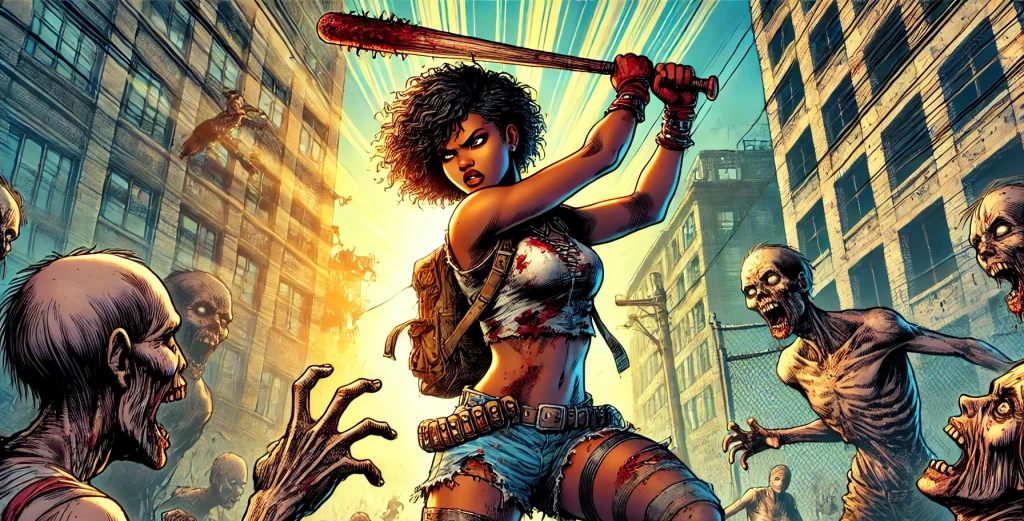The order in which actions are resolved during a round is fluid. Players and the GM can discuss the situation to determine the most logical order of actions, with the GM making the final decision based on the context. This flexible approach allows players to combine their efforts more easily, avoiding the rigidity of a strict turn-based system.
When disagreements arise over action order, the GM may call for initiative rolls to resolve the conflict. Opposing characters roll their Physical Agility dice, rerolling in the event of a tie. Initiative rolls can be made multiple times during a round if further disputes occur.
This flexible system encourages teamwork and adaptability, allowing players to coordinate their actions seamlessly while maintaining the flow of the game.
Example of Action Order
GM: “Three zombies are closing in fast, and you’re armed with a bat. They’re about 10 feet away. What do you do?”
Player: “I’ll move forward and swing my bat at the closest zombie’s head.”
GM: “That’s one action to move and one to attack. Roll for your swing.”
Player: [rolls] “That’s an 18.”
GM: “Your bat smashes into the zombie’s skull, dropping it instantly. The two remaining zombies are still advancing. One of them is lunging toward you, trying to grab you.”
Player: “I’ll use some of my remaining movement to back up and avoid the grab.”
GM: “You can back away, but it’s going to be close. The zombie is right on top of you. We’ll need to roll initiative to see if you can move before it gets you. Your PA die is a d10. The zombie’s is a d6. Go ahead and roll.”
Player: [rolls d10] “1Only a 3.”
GM: [rolls for zombie] “The zombie rolled a 4. You try to back away, but the creature’s filthy claws wrap around you before you can do it.”

